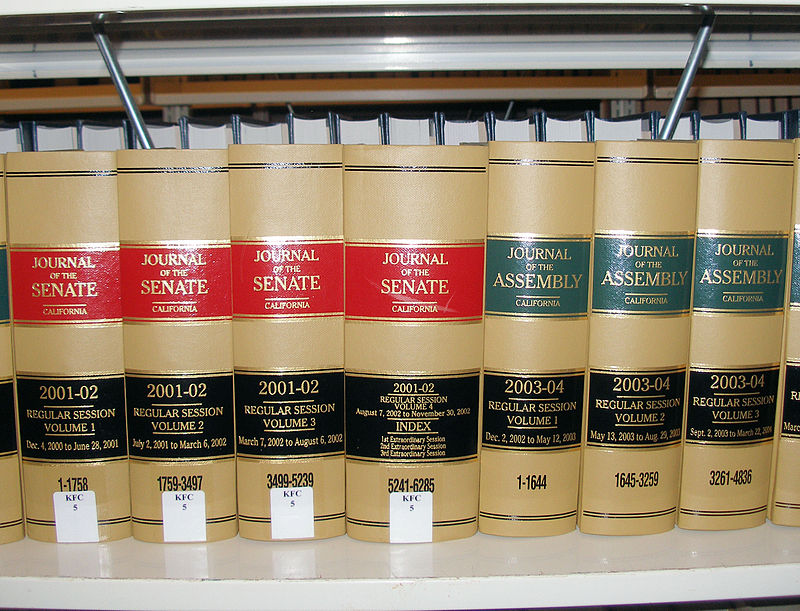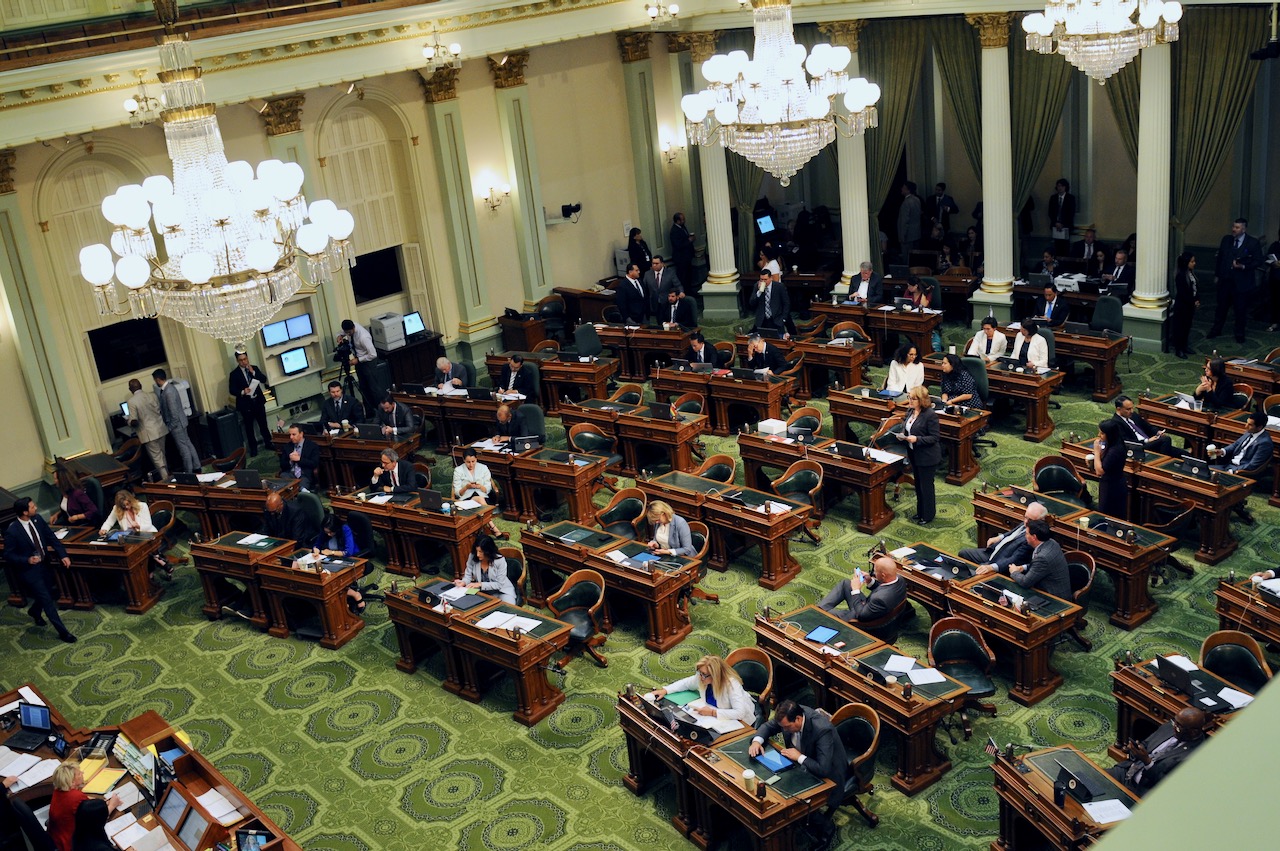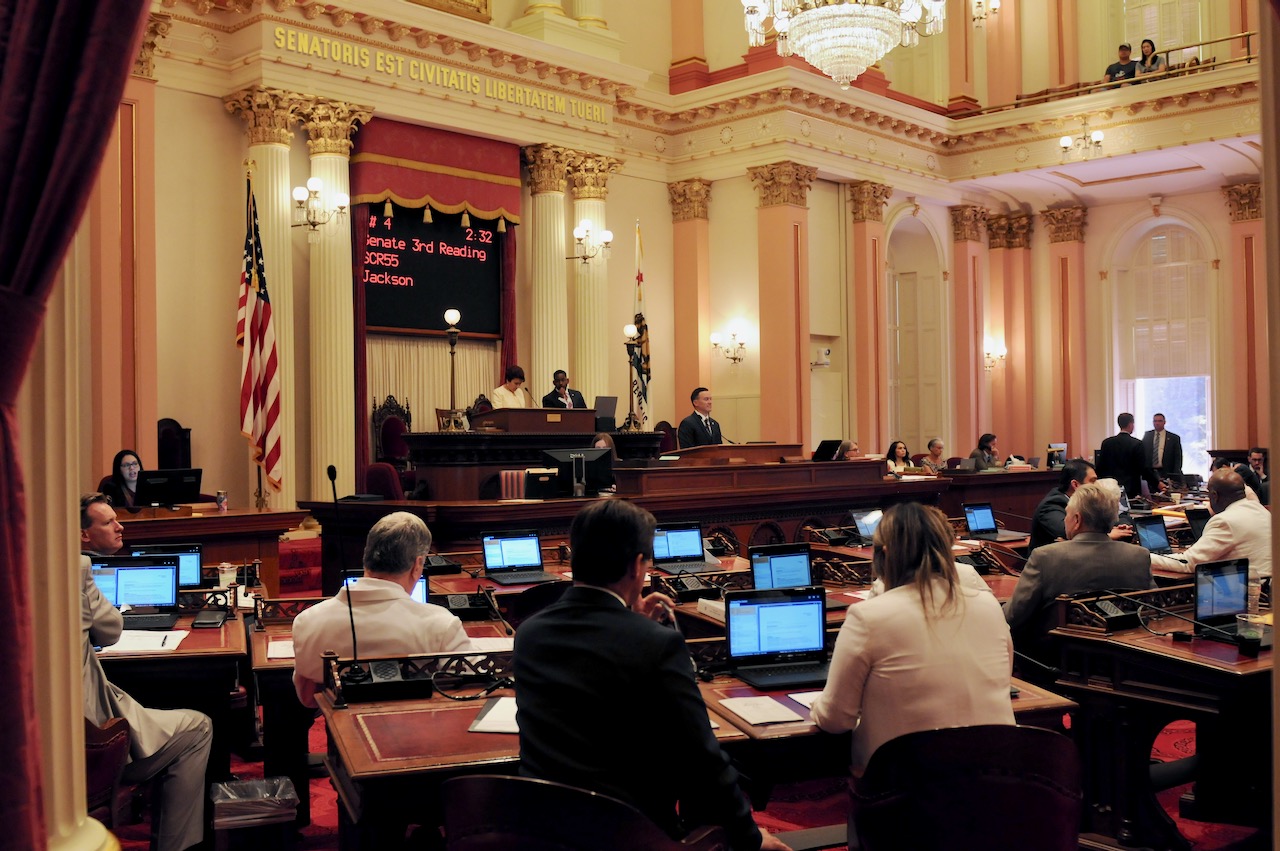
Journals of the California Legislature. (Photo: Wikipedia)
The Anatomy a California Bill
A bill is what enacts a statute
By Chris Micheli, October 26, 2020 6:21 am
In the California Legislature, pursuant to Article IV, Section 8(b)(1), “the Legislature may make no law except by statute and may enact no statute except by bill.” As a result, a bill is what enacts a statute. The Legislative Counsel defines a bill as “a proposed law, introduced during a session for consideration by the Legislature, and identified numerically in order of presentation.” So, what are the component parts of a bill?
In terms of its anatomy, a bill contains the following provisions:
Legislative Session. At the top of each bill, the following language appears: “California Legislature – 2019-2020 Regular Session.” The only two items that change would be the 2-year Legislative Session, and if there is an Extraordinary Session (also called a special session), rather than a Regular Session.
Bill Number, which follows the words “Assembly Bill” or “Senate Bill. The Assembly Chief Clerk or the Secretary of the Senate assigns the bills numbers for each bill introduced in its respective house of origin, usually in the order in which it was received at the Assembly or Senate Desk. This number remains the same throughout the legislative process, even when the measure is considered in the second house.
Author(s), as well as principal coauthors and coauthors. In the U.S. Congress and many state legislatures, the author of the bill is known and referred to as the “sponsor.” In the California Legislature, the author is the legislator who authors the bill. The first line always lists the main author(s) who introduced the bill. Below the first line lists any principal coauthor and the next line lists any coauthor. One list is used for the house of origin coauthors and another line below that is used for coauthors from the other house.
Date Introduced, as well as Date Amended, with the house making the amendment listed(i.e., the Senate or Assembly).
Bill Title, which is a short phrase, also called the “Relating” clause because it begins with the phrase: “An act to amend/add/repeal Section ___ of the ___ Code, relating to ….” The title must encompass the subject matter contained in the bill is not changed or amended as the bill moves forward, unless the bill is “gutted-and-amended” into an entirely different subject.
Legislative Counsel’s Digest, which begins with the bill number, the phrase “as introduced” or “as amended,” the bill’s lead author, and a short phrase regarding the subject matter of the bill. Thereafter, the Digest contains a statement of existing state law, followed by an explanation of what this bill proposes to do to change existing law.
Digest Key, which contains the four keys: vote; appropriation; fiscal committee; and, local program.
Bill Text, which is the actual language of the bill to amend, add or repeal sections of the 29 Codes that exist in California law. Bills are divided into sections, which could include findings and declarations (essentially a statement of the bill’s purpose by the Legislature), as well as substantive law changes that can be codified or uncodified statutes. At the end of the text can often been found “plus sections,” which are provisions related to not statutory changes, but are parts of the bill. Examples could include an urgency clause, a state-mandated local program, etc.
Before the actual bill text begins, it is preceded by the required “enacting clause,” which every bill must contain and it reads: “The People of the State of California do enact as follows:”
At the end of the bill text, appears any additional sections of the bill that contain requirements provisions, such as an urgency clause. These are the provisions that make up the anatomy of a bill in the California Legislature.
- State Contract Act Requirements - November 23, 2024
- Resolution of Public Contract Claims - November 22, 2024
- Offenses Under the State Contract Act - November 21, 2024




